Quaver Grouping
Notes that are smaller than a crotchet in duration (quavers & semi-quavers) need to be joined together if there are more than one of them side by side.
We join quavers together with a single beam. They can be joined in groups of 2:
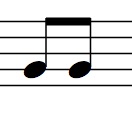
Or groups of 4:
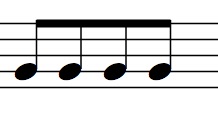
Quavers need to be grouped together to show the underlying crotchet beat. It will depend on the time signature and the other notes in the bar as to whether to group in lots of two or four.
The groupings must clearly show the crotchet beats and the strong & weak parts of the bar. For example:

With 4 crotchet beats, the bar is divided into strong, weak, strong, weak beats.
The quavers on the first beat can be grouped to the quavers on the second beat and the quavers on the third beat can be grouped to the quavers on the fourth.
However, the quavers on the second beat cannot be grouped to the quavers on the third beat:

Semi-quaver Grouping
Semi-quavers are also joined into groups but with a double beam. They can also be joined together as a group of 2:
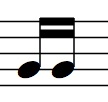
Or a group of 4:
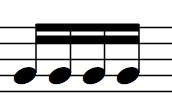
It will depend on the other notes around them as to whether it will be a group of two or four.
When semi-quavers are beside quavers, they can be joined together to show the underlying crotchet beat.
There are five different clusters of semi-quaver/quaver groups that you need to recognise.
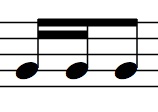
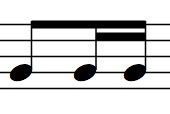


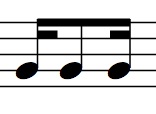
You will notice that when a semi-quaver goes before the quaver that the double beam only goes half way across. If a quaver goes before a semi-quaver, there is only a single beam.
